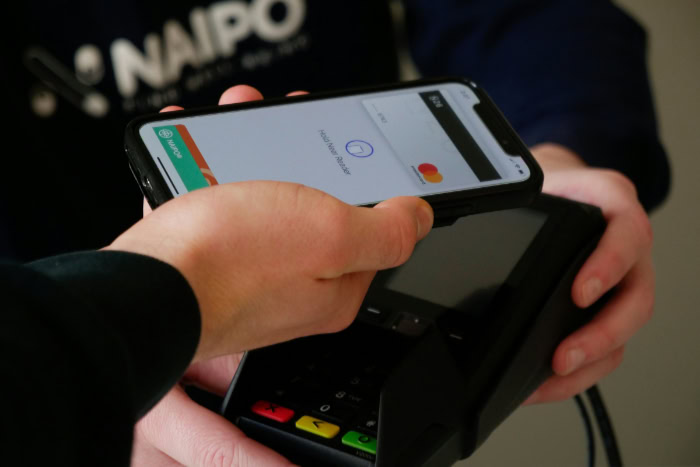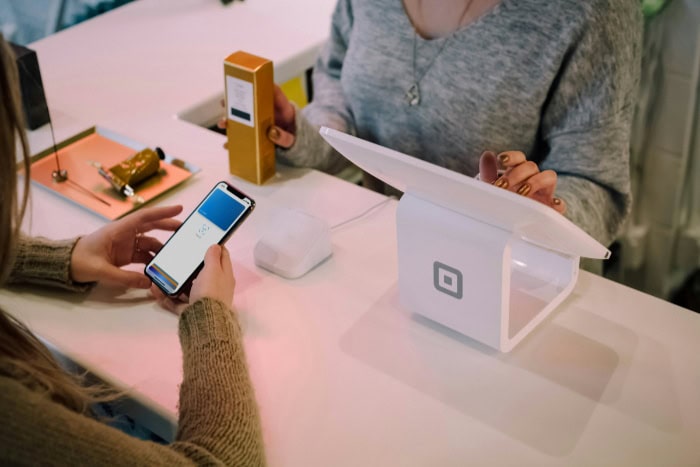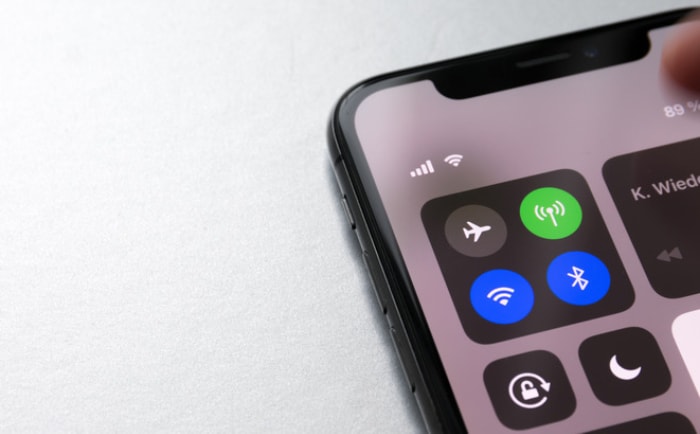What Is Apple Pay and How Does It Work?

Paying for your morning coffee or shopping online has never been easier, thanks to innovations like Apple Pay. Designed to replace physical wallets, Apple Pay is a secure and seamless way to make payments using only your Apple device.
As the world embraces faster, more convenient payment methods, this contactless system has become a favorite for millions, offering a blend of speed, simplicity, and security.
Gone are the worries about pulling out a card or fumbling with cash. Apple Pay lets you pay with a simple tap or a quick glance using Face ID. But how exactly does it work, and why has it become so popular?
Core Features and Technology
Apple Pay is a contactless payment system and digital wallet created by Apple. The platform allows users to store credit cards, debit cards, and other payment methods directly on their Apple devices.
Unlike physical cards, which require direct interaction with terminals, Apple Pay enables frictionless transactions through wireless communication. Beyond its functional benefits, Apple Pay strengthens security, making it safer than carrying a physical card or using some alternative digital wallets.
One of the standout aspects of Apple Pay is its integration within Apple’s ecosystem. Unlike other digital wallets, Apple Pay is deeply embedded into devices such as iPhones, Apple Watches, and Macs, creating a unified and secure payment experience.
Its seamless operation with Face ID, Touch ID, and the Wallet app eliminates the need to remember PIN codes or carry multiple cards. Payments feel effortless, whether at a store checkout or when purchasing through apps or websites.
How Apple Pay Works
At the core of Apple Pay is Near Field Communication (NFC) technology. This is the mechanism that enables contactless payments by establishing a secure, wireless connection between your device and the payment terminal.
When you hold your iPhone or Apple Watch near the terminal, the NFC chip enables encrypted communication that allows you to approve the transaction without inserting a physical card.
Supported Devices and Requirements
Apple Pay’s availability spans across many of Apple’s devices, offering flexibility in how users choose to make payments. The service is supported on iPhones starting from iPhone 6 or later and Apple Watches of all generations, making it accessible to most users of recent Apple products.
Additionally, MacBooks with a Touch Bar or Touch ID and iPads running compatible software versions can use Apple Pay for online and in-app purchases.
To use Apple Pay, bank and card compatibility are also essential. The service supports a wide range of banks and financial institutions globally, though availability might vary by region.
Users can add major credit and debit cards from participating banks into the Wallet app to get started. While most modern card providers are compatible, checking with your bank ensures smooth activation. Access to Apple Pay also requires an Apple ID linked to iCloud, keeping the process efficient and secure.
With its cutting-edge technology and extensive device compatibility, Apple Pay caters to a wide range of users looking for a flexible and safe way to handle their payments.
Setting Up and Using Apple Pay

Setting up and using Apple Pay is designed to be a simple, intuitive process that seamlessly integrates with your Apple devices. From adding your payment cards to completing purchases, the steps are straightforward, ensuring even first-time users can get started quickly.
Step-by-Step Setup Guide
Getting Apple Pay ready on your device begins with the Wallet app, the central hub for storing and managing your payment cards. To add a card, open the Wallet app on your iPhone or iPad, tap the “+” icon, and follow the prompts.
You’ll need to either scan your card with your device’s camera or enter the details manually. Apple Pay supports a wide range of debit and credit cards, but it’s always a good idea to check if your bank or card provider is compatible.
Once the card details are added, a verification process ensures security. Depending on the bank, you may need to confirm your identity by entering a code sent via SMS, using a banking app, or speaking to your bank directly.
After verification, the card is linked to Apple Pay and ready for use. If you’re using an Apple Watch, you can set up Apple Pay through the Watch app on your iPhone by selecting “Wallet & Apple Pay” and following similar steps to add cards to your watch.
Making Payments
Making payments with Apple Pay is as straightforward as it gets, whether you're in a physical store or shopping online. For in-store transactions, Apple Pay relies on the NFC capabilities of your device.
To pay using your iPhone, double-click the side button or Home button (depending on your model) to activate Apple Pay, authenticate using Face ID, Touch ID, or your passcode, and hold your phone near the contactless payment terminal. Apple Pay automatically processes the payment, completing the transaction in seconds.
If you’re using an Apple Watch, double-press the side button and hold the watch near the payment terminal to complete the process. The watch provides haptic feedback and displays a confirmation when the payment is successful.
For online and in-app purchases, Apple Pay offers a faster, more secure option compared to manually entering card details. When checking out with Apple Pay on a website or app, simply select it as your payment method.
On an iPhone or iPad, you can authenticate the purchase using Face ID, Touch ID, or a passcode. If shopping on a Mac, payments can be confirmed using Touch ID on the keyboard or an iPhone nearby.
Safari integration ensures that Apple Pay is presented as an option on supported websites, streamlining the checkout process even further.
Managing Cards and Transactions
The flexibility of Apple Pay extends beyond making payments, as it allows easy management of your cards and transactions. If you need to update or remove a card, open the Wallet app, select the card in question, and choose the relevant option.
Updating card details, such as expiration dates or billing addresses, can often be done automatically if your bank supports these updates. If not, you can re-enter the updated details manually.
Keeping track of your spending is simple, as Apple Pay provides a transaction history for each card stored in the Wallet app. When you tap a card, you’ll see a list of recent payments, including the merchant name, location, and amount.
While the level of detail may vary depending on the bank or card issuer, this feature provides a helpful overview of your recent activity.
Security and Privacy Mechanisms

Security and privacy are central to the functionality of Apple Pay, making it a trusted option for both in-store and online transactions. The platform is designed to prioritize the protection of financial data, user identity, and personal information.
A combination of advanced technologies and privacy-focused policies helps ensure that users’ payment activities remain secure and confidential while minimizing risks such as fraud or theft.
Protecting Financial Data
Apple Pay employs advanced security mechanisms to safeguard financial data, ensuring that users' card information is never vulnerable during transactions. One of the most crucial technologies at play is tokenization.
Instead of transmitting real card numbers to the payment terminal, Apple Pay generates a unique identifier called a Device Account Number. This number, combined with a dynamic security code specific to each transaction, ensures that payment details are masked and unusable by unauthorized parties.
Even if intercepted, the data remains meaningless to potential attackers.
Authentication is another layer of protection that adds security without sacrificing convenience. Apple Pay transactions require users to confirm their identity using biometric methods such as Face ID or Touch ID, or by entering a device passcode.
These biometric systems are designed to prevent unauthorized access, as they rely on unique biological features that cannot easily be replicated. This added step ensures payments are always authorized by the rightful device owner, reducing the likelihood of fraudulent usage.
Privacy Advantages
Apple Pay is built with a commitment to protecting user privacy and ensuring that personal and transactional data remains confidential. Unlike traditional payment methods or some other digital wallets, Apple Pay does not store transaction details on its servers.
This means Apple cannot access or track your spending habits, offering a higher level of privacy compared to many competing platforms.
Merchants only receive the information necessary to complete the transaction, such as the payment amount and a limited identifier for your card. Sensitive details like your actual card number or personal data are never shared.
By limiting what merchants can see, Apple Pay helps reduce the chances of identity theft or data breaches affecting users. The emphasis on minimal data sharing aligns with broader privacy goals, fostering a sense of trust among Apple Pay users.
Fraud Prevention
Apple Pay also includes multiple fraud prevention measures to protect users in the event of theft or loss. Devices with Apple Pay installed can be secured remotely through the Find My iPhone feature.
If a phone or Apple Watch is lost, the owner can suspend or remove payment functionality remotely, ensuring that no unauthorized transactions occur. Because Apple Pay requires biometric authentication or a passcode for every transaction, even physical possession of a lost device does not guarantee access to its payment capabilities.
Additionally, many banks and card issuers that work with Apple Pay offer zero liability policies, meaning that users are not held responsible for unauthorized charges made using their accounts. Combined with the platform’s existing security measures, these policies provide peace of mind for users, even if card information or devices are compromised.
Challenges to Consider

Despite its many advantages, Apple Pay is not without its limitations. One of the most common challenges is its acceptance, particularly among smaller retailers and independent businesses.
While large chains and online platforms often support Apple Pay, some smaller merchants may lack the necessary infrastructure or hesitate to adopt contactless payment technologies. This can make it less practical in certain settings where traditional payment methods are more widely accepted.
Another drawback is the dependency on the device itself. Since Apple Pay relies on the functionality of an Apple device, running out of battery or experiencing technical issues can leave users temporarily unable to access their payment method.
Unlike a physical card, which remains operational regardless of external factors, Apple Pay’s reliance on the device’s state and power can sometimes create inconvenience.
International travel can also present complications when using Apple Pay. While the platform supports payments in many countries, users may encounter compatibility issues with local banks or payment networks.
Additionally, some banks may impose international transaction fees, which can make Apple Pay less cost-effective for purchases outside the user’s home country.
Apple Pay’s benefits make it a standout option for those prioritizing speed, convenience, and security, but its limitations highlight situations where traditional payment methods may still be needed. A balanced view of its capabilities and constraints can help users make the most of this innovative payment platform.
Conclusion
Apple Pay has transformed the way payments are made by combining convenience, security, and efficiency into a single platform. It offers a streamlined experience for Apple device users, making transactions faster and more secure, whether in-store, online, or within apps.
Through technologies like tokenization and biometric authentication, it prioritizes the safety of financial data while keeping personal information private.
While its seamless integration into the Apple ecosystem and ease of use are major advantages, certain challenges, such as limited acceptance by smaller retailers and device reliance, may require users to consider alternatives in specific situations. Despite these limitations, Apple Pay is a valuable payment tool that aligns well with the fast-paced demands of modern life, catering to users who seek a reliable and secure way to manage transactions.


